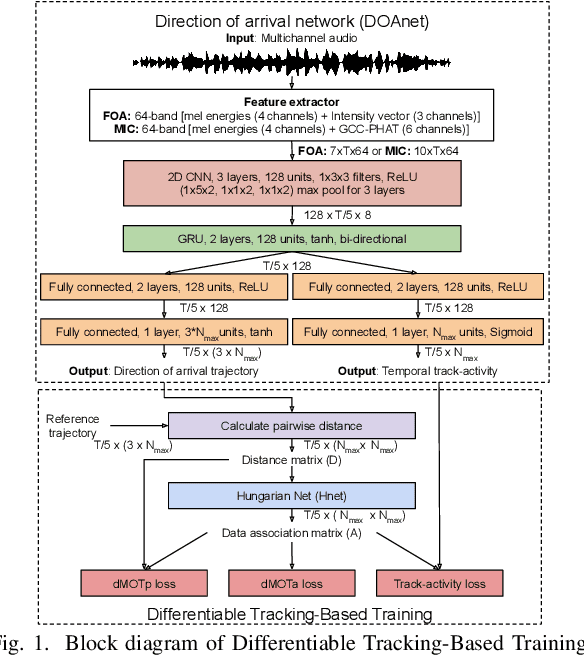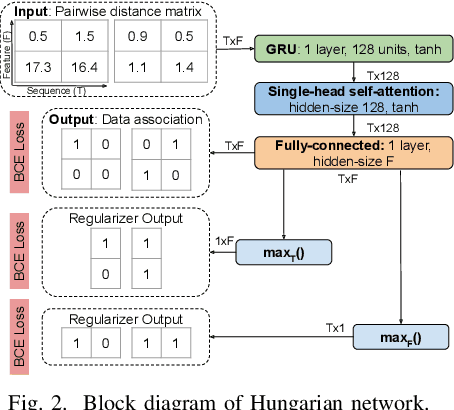Differentiable Tracking-Based Training of Deep Learning Sound Source Localizers
Paper and Code
Oct 29, 2021


Data-based and learning-based sound source localization (SSL) has shown promising results in challenging conditions, and is commonly set as a classification or a regression problem. Regression-based approaches have certain advantages over classification-based, such as continuous direction-of-arrival estimation of static and moving sources. However, multi-source scenarios require multiple regressors without a clear training strategy up-to-date, that does not rely on auxiliary information such as simultaneous sound classification. We investigate end-to-end training of such methods with a technique recently proposed for video object detectors, adapted to the SSL setting. A differentiable network is constructed that can be plugged to the output of the localizer to solve the optimal assignment between predictions and references, optimizing directly the popular CLEAR-MOT tracking metrics. Results indicate large improvements over directly optimizing mean squared errors, in terms of localization error, detection metrics, and tracking capabilities.
 Add to Chrome
Add to Chrome Add to Firefox
Add to Firefox Add to Edge
Add to Edge